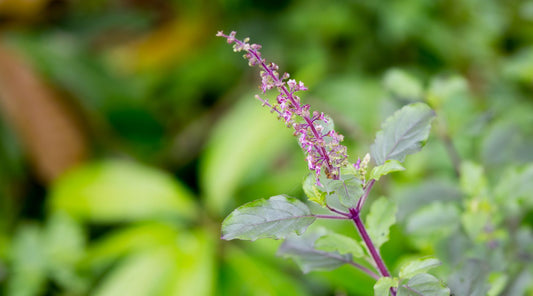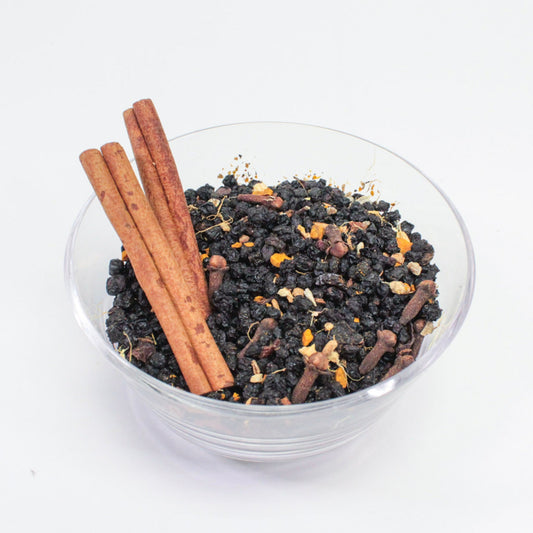Often called “The Queen of Herbs,” Tulsi (Ocimum tenuiflorum) is a sacred plant in the mint family with deep roots in traditional wellness practices.
Three main varieties—Rama, Krishna, and Vana—offer slightly different flavors: Rama is gentle and cooling, Krishna carries a peppery depth, and Vana brings citrusy brightness. A blend of all three creates the complex, heart-centered flavor found in many of our favorite teas at Flourish.
In traditional herbal energetics, (how herbs create harmony in your body) Tulsi is:
-
Temperature: Warming and gently drying
-
Energy: Light and uplifting
-
Systems supported: Nervous, respiratory, digestive and circulatory
-
Emotional tone: Clears mental fog, invites calm focus, and renews enthusiasm
These qualities make Tulsi an ideal ally for transitional seasons, especially autumn when the air grows cool and our bodies crave warmth and steadiness.
Contemporary herbalists describe Tulsi as a gentle adaptogen—a plant that supports the body’s natural ability to adapt to everyday stress.
Research continues to explore Tulsi’s potential to:
-
Support a healthy stress response and emotional balance
-
Encourage mental clarity and focus without caffeine
-
Enhance overall vitality
Emerging research has explored Tulsi’s ability to support a balanced response to occasional stress and promote a sense of clarity and calm — effects believed to involve the brain’s emotional-response center, the amygdala, which helps regulate the body’s natural “fight-or-flight” response (Lopresti et al., 2022).
At Flourish, we love Tulsi for the way it helps us reset during transitional seasons. Its naturally aromatic leaves offer notes of clove, citrus, and spice, making it a beautiful addition to teas, tinctures, and elixirs that encourage centered focus.
In the Garden
Tulsi thrives in warm, sunny locations and rich, well-drained soil just like any other basil in your garden. In our Kansas climate, Tulsi grows happily in pots or raised beds once nighttime temperatures stay above 50 °F. Regular pinching encourages bushier growth and helps extend the harvest through early autumn. Bees adore the small purple blossoms, another reason to let a few stems flower now before our first frost.
At Home
Try steeping 1-2 teaspoons of dried Tulsi in hot water for 5–8 minutes. Enjoy as an afternoon pause. Combine with ginger or lemon balm for extra brightness, add honey to taste.
Rooted in Community
As the days shorten and our lives quicken, Tulsi invites us to stay present, steady, and connected to ourselves, to each other, and to the living plants that help us flourish.
These statements have not been evaluated by the Food and Drug Administration. This is not intended to diagnose, treat, cure, or prevent any disease.




